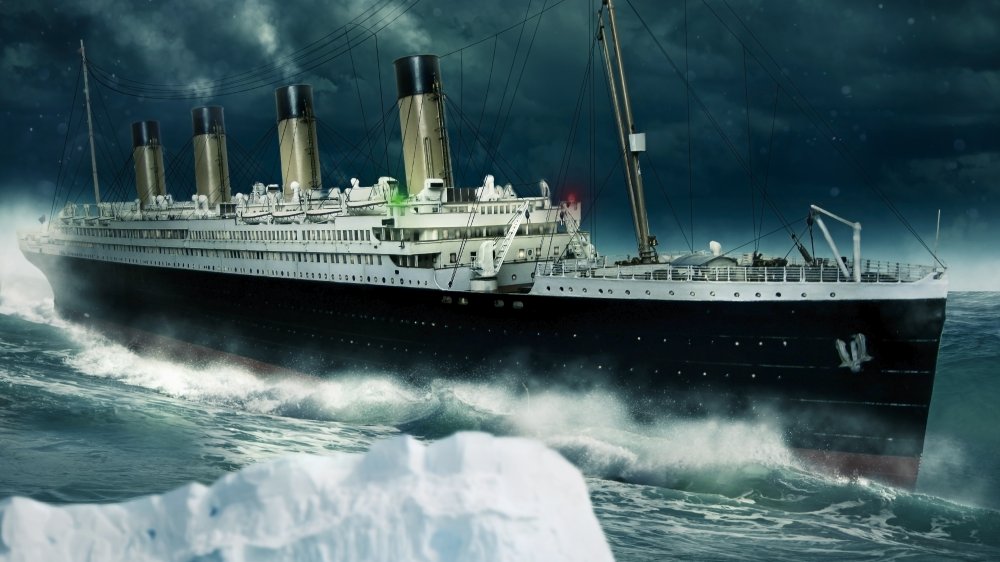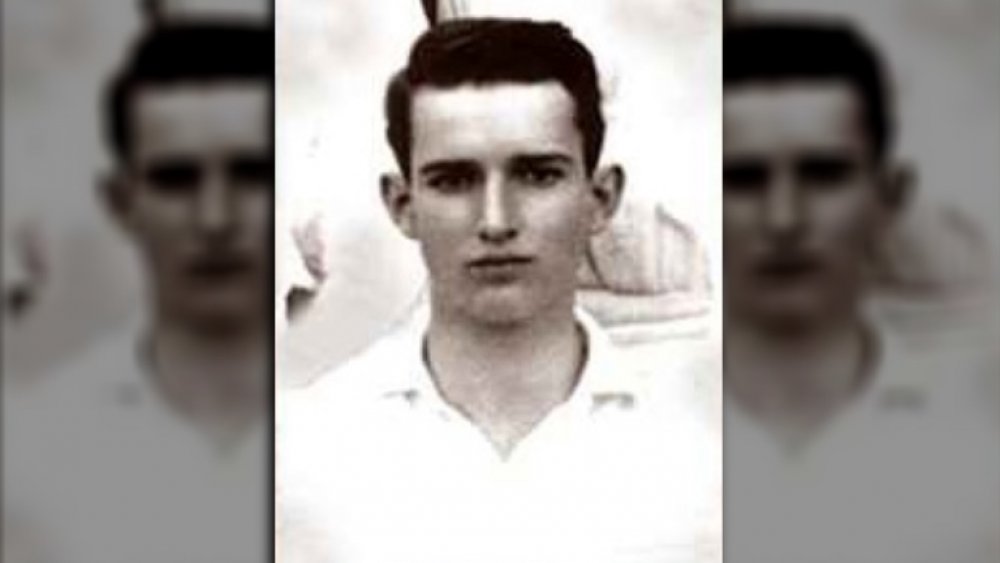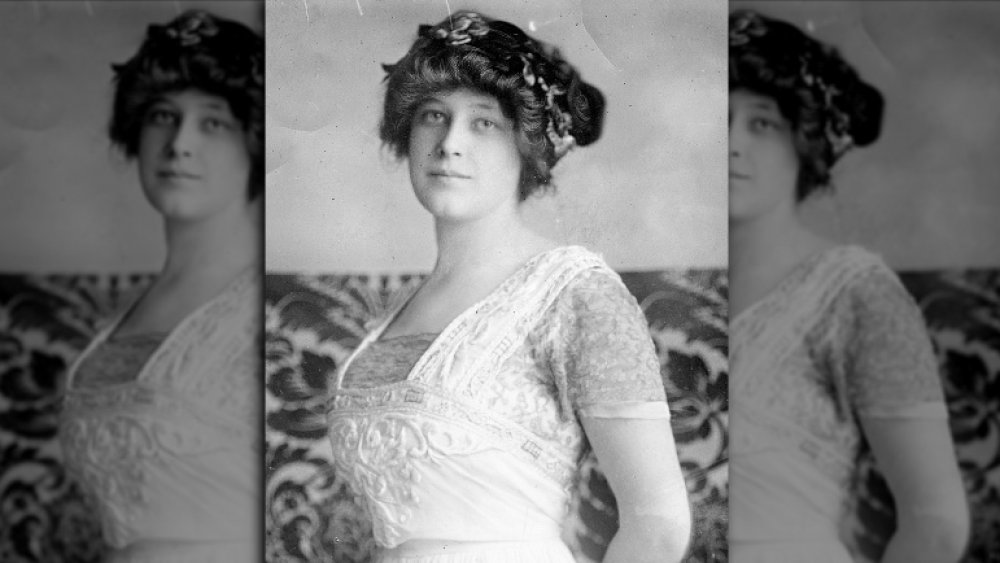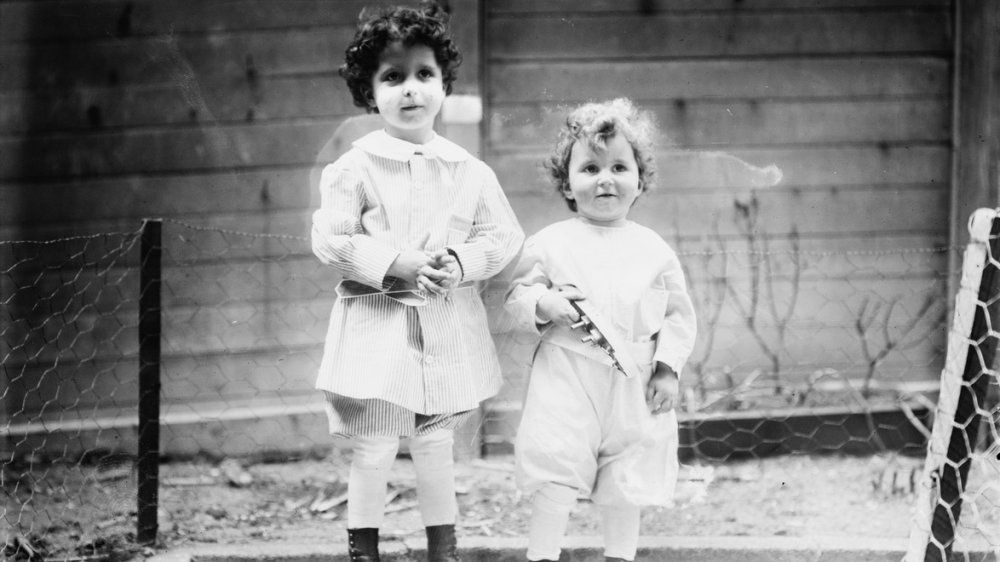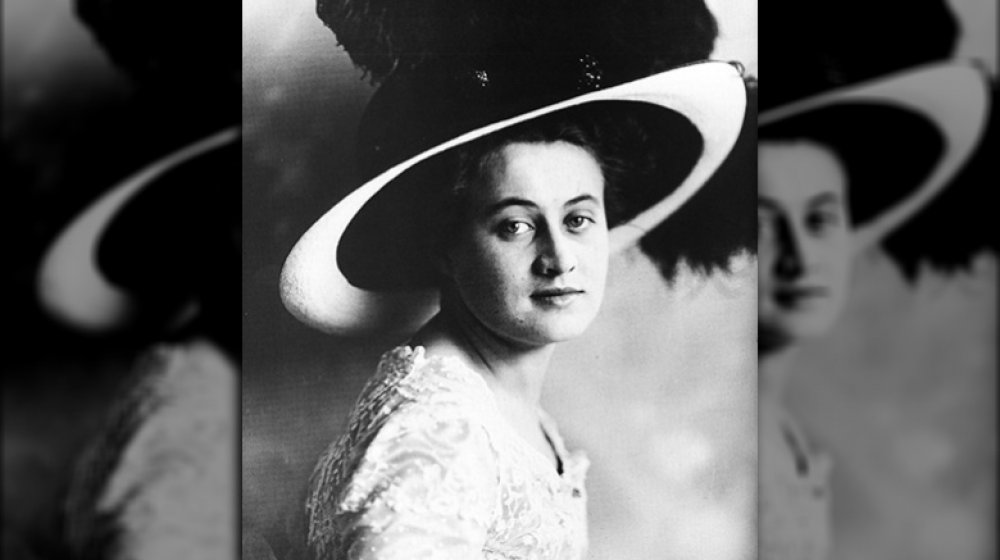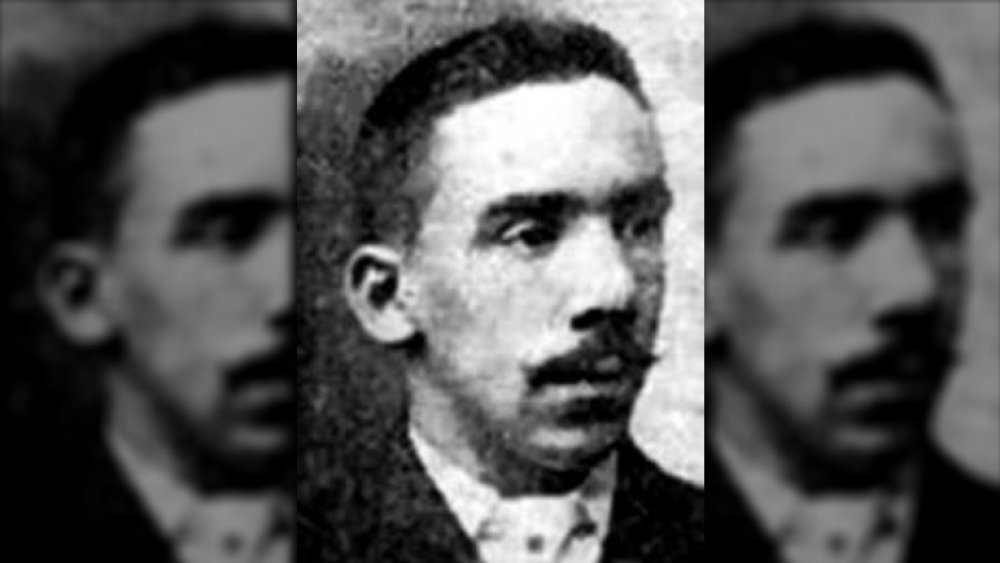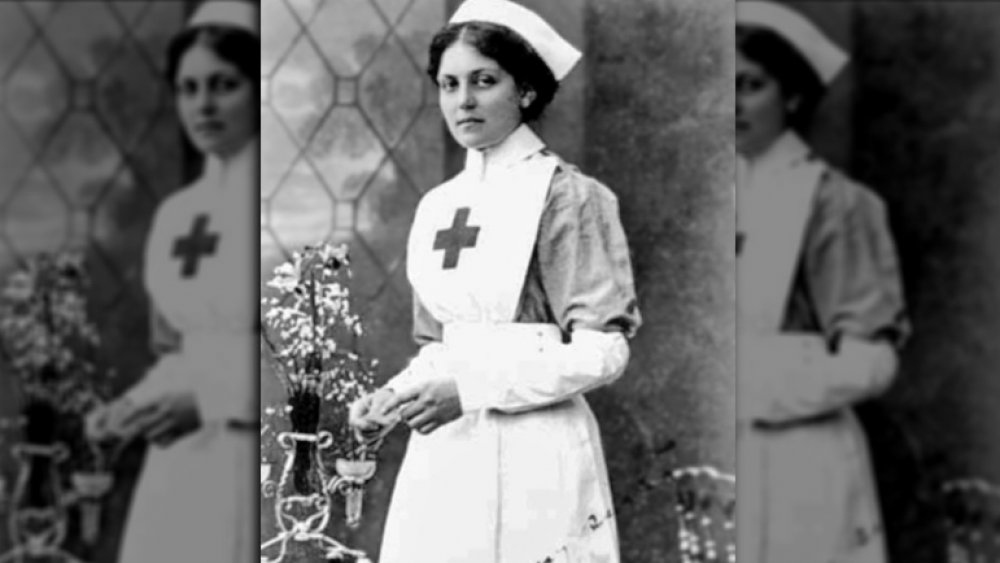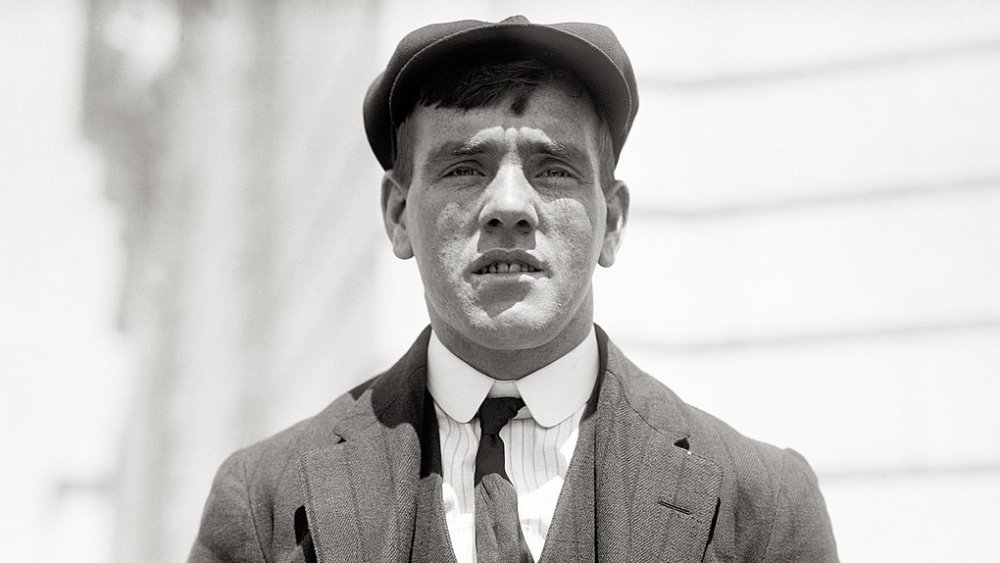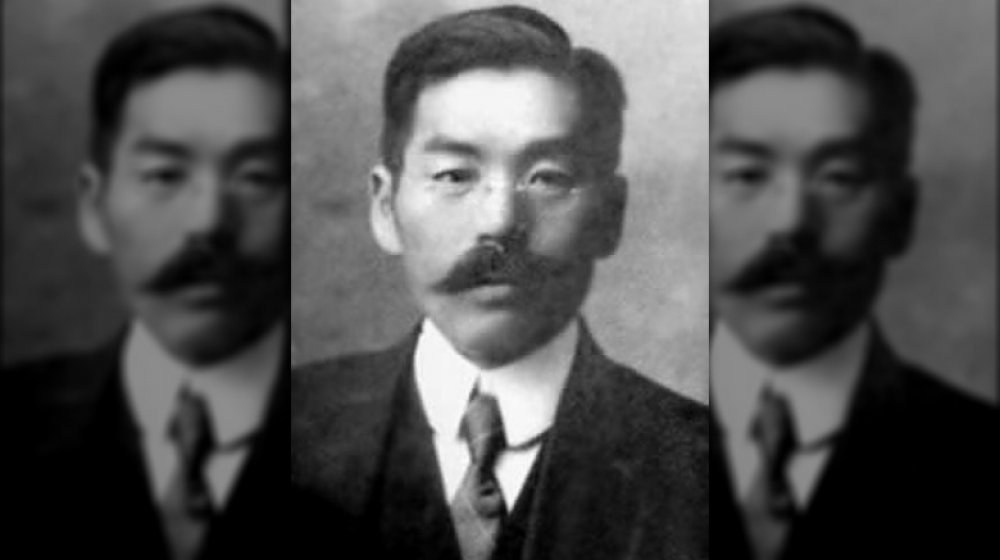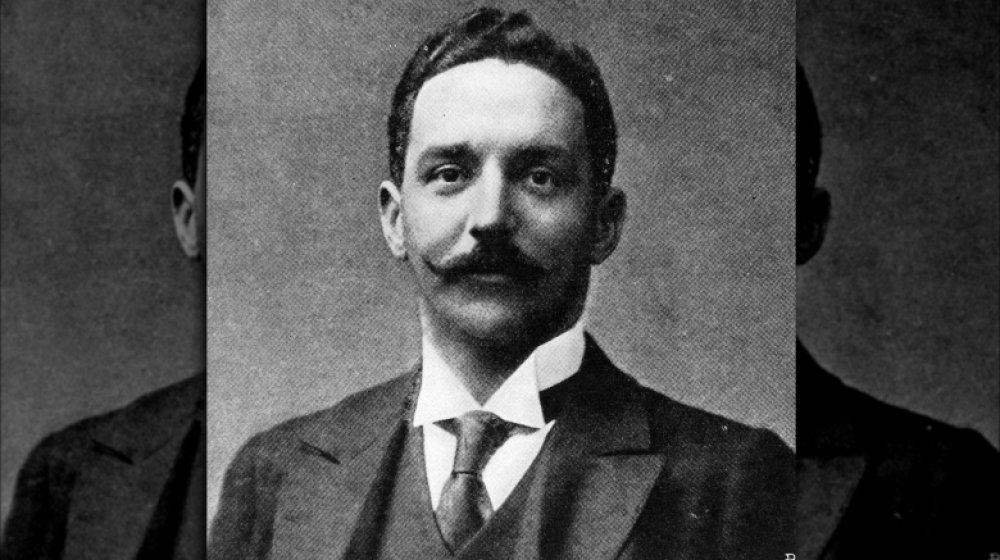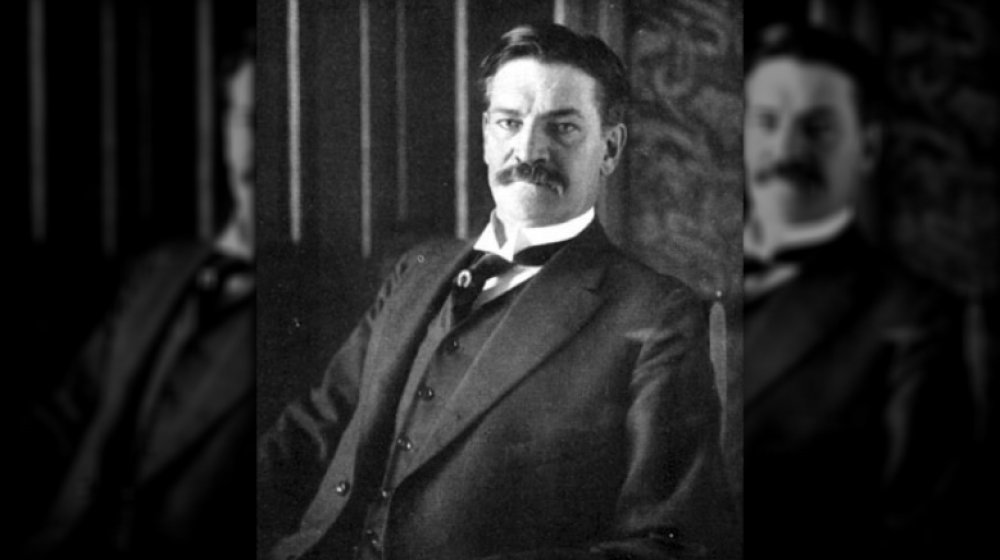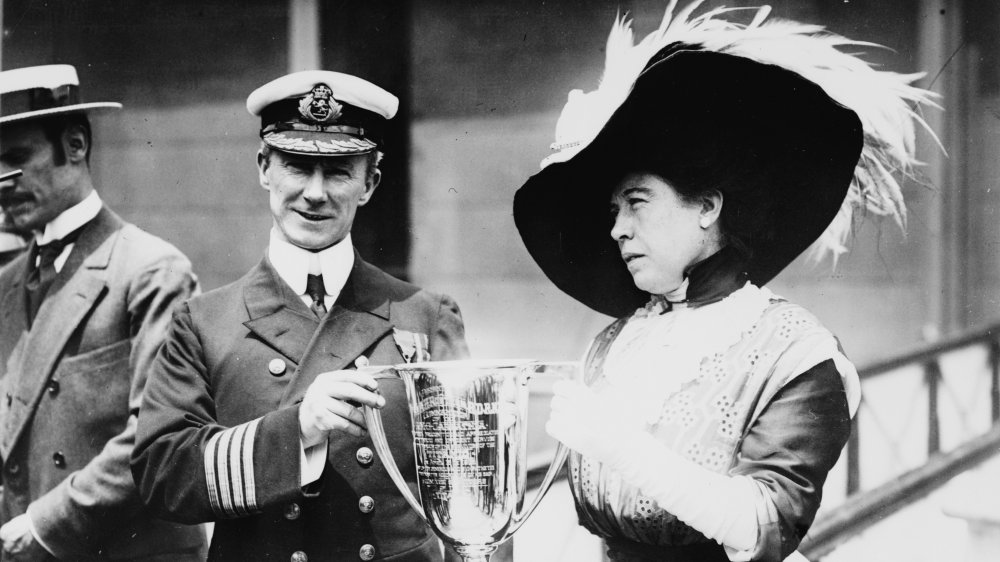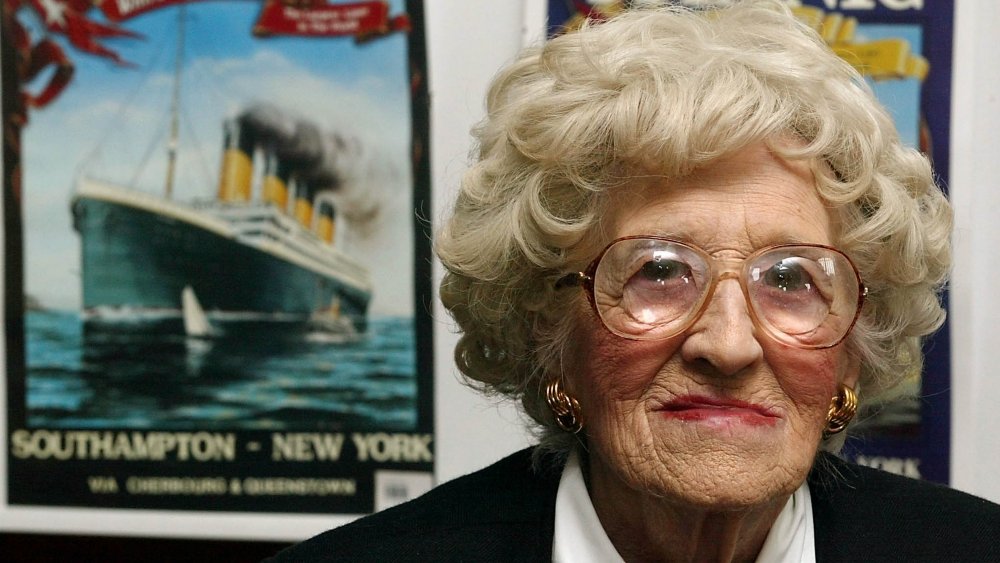The Truth About What Happened To The Titanic Survivors
Today, pretty much everyone knows that the Titanic had more victims than survivors, that it broke in half on the way down, and that there was totally enough room on that door for both Jack and Rose. But most of us don't know what became of those lucky few survivors. Did they disembark in New York with a renewed sense of purpose, a lust for life, and a determination to do something with the time they had left? Or did they spend the rest of their days suffering from survivor's guilt, haunted by memories of the dead and dying? Did they capitalize on the experience, or did they just try to forget the whole thing?
Well, we can't tell you what happened to all 706 survivors, but we can tell you what happened to some of them — and it was kind of all of the above. Some buried the experience for years, while others never got over it, and some didn't seem to be affected by the experience at all. Here are just some of their stories.
Jack Thayer did okay until tragedy brought back old memories
Jack Thayer was just 17 when he was separated from his parents during the chaos, and he remained on board the Titanic until almost the very end. As the ship sank beneath the waves, Thayer jumped into the cold water and eventually ended up near an overturned lifeboat. Some men helped him climb on, and he was later picked up by the passengers of another (upright) lifeboat.
Thayer's mother survived, too, but his father did not. According to The Independent, Thayer went on to marry and have six children, but he never talked about the Titanic. He became a banker and seemed to have a pretty happy life, though he avoided boats. But he couldn't ignore his memories forever, and as his kids started to approach the age he'd been when he boarded the doomed liner, he decided to write an account of the sinking for his family. After that, he became anxious and unsettled by his memories.
Then in 1943, Thayer's 22-year-old son was killed when his plane crashed into the Pacific Ocean, a fate that was so similar to his own ordeal that it haunted him. Six months later, Thayer's mother died, just one day before the 32nd anniversary of the sinking. The two losses triggered a nervous breakdown and prolonged depression, and Thayer committed suicide on September 18, 1945.
If you or anyone you know is having suicidal thoughts, please call the National Suicide Prevention Lifeline at 1-800-273-TALK (8255).
Madeleine Astor was unlucky in love
One of the Titanic's most famous passengers was John Jacob Astor IV, a wealthy financier who was traveling first class with his 18-year-old pregnant wife, Madeleine. In the early moments after the collision, Astor scoffed at the idea of getting on a lifeboat, but by 1:45 AM, he'd changed his mind, helping Madeleine into a lifeboat and then standing alone after he was told he couldn't join her. He died in the sinking.
Madeleine, though, survived, and became a fabulously wealthy widow at the age of 18. According to The Independent, her wealth came with a cruel caveat. To keep all of Astor's money, she would need to remain unwed for the rest of her life. Madeleine hung in there for a little while, but eventually, love got the better of her, and she chose to forgo the fortune so she could marry a childhood friend. Her second husband wasn't exactly poor, though, and she lived comfortably until 1932 when she embarked on a sordid affair with an Italian prize fighter. The couple married a year later, even though they were both already married ... and even though he frequently beat Madeleine up.
By 1937, she was finally rid of him, but just to keep things cordial, she gave him $150,000 when they parted. He thanked her by selling the story of their tumultuous marriage to a tabloid. Madeleine died in 1940. Officially, her cause of death was heart failure. Unofficially, it was an overdose of sleeping pills.
The Titanic 'orphans'
We know a lot about the fate of the Titanic's first-class passengers, because in those days, the press thought the first-class folks were the only ones worth talking about. Less is known about the people traveling in second and third class, which is especially sad since 76 percent of third-class passengers died in the sinking versus 58 percent of those traveling in second class and just 39 percent of those in first class.
Michel and Edmond Navratil were second-class passengers, and they were also abductees. Their French father was taking them to America without their mother's knowledge, and they were traveling under false names. According to All That's Interesting, after the ship struck the iceberg, their dad loaded the boys — ages two and four — into a lifeboat and then went down with the ship.
The boys then anonymously boarded the Carpathia , a ship that came to the rescue. They were the only surviving children who weren't accompanied by at least one parent or adult guardian, and they didn't speak English, either, so they weren't even able to tell authorities who they were. Even after authorities found someone to translate, neither one of the boys would answer questions with anything other than "oui."
Finally, the boys' mother saw a photograph of them in a newspaper and identified them. She had no idea they'd even been on board the Titanic. They were reunited and returned to France, where they remained for the rest of their lives. Edmond died in his early 40s, but Michel lived to be 92.
Dorothy Gibson made a film about the Titanic, starring herself
It takes a special sort of personality to emerge from a disaster not only totally unscathed, but also so totally not-affected by your ordeal that you immediately start making plans to profit off a movie about the experience. That was Dorothy Gibson, the silent film star who was traveling home from a Paris vacation when the Titanic struck the iceberg. Gibson boarded a lifeboat, and she was saved along with her mother and a couple of acquaintances.
Almost immediately after arriving in New York, Gibson started shooting Saved from the Titanic, an account of the sinking in which she wore the same outfit she'd worn on the night of the disaster and basically played a much more heroic version of herself. After filming wrapped up, she married film pioneer Jules Brulatour, but they divorced by 1919.
Gibson moved to Paris and ended up in Florence, Italy, during the worst years of World War II. In 1943, she was arrested and taken to a Nazi concentration camp, eventually ending up imprisoned at San Vittore. She probably would've died there, except she styled herself as a Nazi sympathizer and spy and was smuggled out by a double agent. After the war, Gibson briefly moved into the Paris Ritz, but she died in February 1946. Her cause of death wasn't noted, but it was probably a heart attack.
The Titanic's baker was cool with the whole shipwreck thing
Even if you're a survivor, a shipwreck is a pretty awful experience. A lot of Titanic survivors were apprehensive about, if not downright averse to, ever boarding a ship again. But there were a couple of passengers who kind of just shrugged it off, and one of those was Charles Joughin, the ship's baker.
Joughin's survival is a bit of a mystery because, by his own account, he was in that freezing cold water for a long time — water that was cold enough to kill most of the people who landed in it within minutes. Joughin later claimed that he treaded water for more than two hours before he was helped on board a lifeboat. The secret to his survival? He was really, really drunk. Well, that's the theory, anyway. According to the National Post, if the alcohol didn't keep him warm, it definitely kept him from panicking.
After his ordeal, Joughin went on to become — wait for it — a ship's baker. And the Titanic wasn't his last shipwreck, either. In 1916, he was serving on a ship called the SS Congress when it caught fire. Then in 1941, the ship he was serving on was accidentally rammed by another ship. And in between all those disasters, he served on other boats, so the whole shipwreck thing really didn't seem to phase him. He died in 1956, not at sea but in a hospital. Good for him.
Violet Jessop survived all three 'ics'
The Titanic had two lesser-known sister ships, the Olympic and the Britannic. Between the Olympic and the Titanic, Titanic was billed as the largest, but it was really only around three inches longer, which might've given it bragging rights but only if no one found out the truth. As for the Britannic, it was built after the Titanic disaster, so it had all the latest safety features, but it still sank three times as fast as its sister did.
Anyway, passenger ships need waitstaff, and one of the servants on board the Olympic was 24-year-old Violet Jessop. According to the Encyclopedia Titanica, Jessop experienced her first accident at sea in 1911, when the Olympic collided with the HMS Hawke. The ship didn't sink, though, and the accident didn't seem to trouble Jessop, either. She went on from there to survive the Titanic, and then moved on to the Britannic, where she served as a British Bed Cross nurse during World War I.
Jessop also survived when the Britcannic sunk after striking a mine in 1916. Despite the much faster sinking, only 30 of the 1,066 people on board the Britannic perished. Undeterred, Jessop continued to work on ships, first for the White Star Line and later for the Red Star Line and the Royal Mail Line. She retired in 1950 and died in 1971 at the age of 84.
Frederick Fleet suffered in secret
A lot of people who survived the sinking of the Titanic suffered lifelong trauma and what we would call PTSD today. Many had survivor's guilt, but some had another kind of guilt — the guilt of feeling like they might've done something to prevent the whole horrible disaster.
One of these people was Frederick Fleet, who spotted the iceberg from the crow's nest at around 11:40 PM. He rang the bell and called down to the bridge with the words "iceberg right ahead." But he wasn't fast enough, and the iceberg scraped along the starboard side of the ship as the crew swung to port to avoid it. Fleet was ordered to row a lifeboat, which is how he managed to escape the sinking. For the rest of his life, he maintained that the tragedy could've been avoided if the crow's nest had only been in possession of a pair of binoculars.
According to Encyclopedia Titanica, Fleet left the White Star line a few months after the disaster and continued to work at sea until 1936. After that he worked as a shipbuilder. He married and had a daughter, but after his wife died in 1964, his brother-in-law kicked him out of the home he owned that the couple had been living in. Fleet committed suicide just two weeks later.
If you or anyone you know is having suicidal thoughts, please call the National Suicide Prevention Lifeline at 1-800-273-TALK (8255).
Masabumi Hosono was shamed for surviving the Titanic
The officers on board the Titanic took the "women and children first" guideline so seriously that in some cases, it was "women and children only." Men who tried to get on board the lifeboats were rebuked, and some of the boats were launched half-empty because there weren't enough women and children willing to leave the imagined safety of the ship for a tiny lifeboat. As a result, some of the male survivors weren't treated especially well.
For example, take Masabumi Hosono, the only Japanese citizen to survive the sinking. He happened to be in the right place at the right time — or the wrong place, depending on your perspective. The officer loading the boats near where Hosono was standing announced that there were two seats left, and Hosono was one of two men who got on board. He survived the sinking and became famous in his home country, but not in a good way.
Hosono was shamed by the Japanese public, because he'd lived while so many others had perished. According to The Vintage News, his story even appeared in textbooks as an example of shameful and unethical behavior. Hosono lived until 1939, but he never recovered from the stain of his survival. His family suffered, too, and for a couple of generations, the name "Hosono" was synonymous with shame in Japan. It wasn't until Hosono's grandchild published some of his writings that the shame finally began to lift, but sadly, it didn't happen in Hosono's lifetime.
J. Bruce Ismay resigned his position, lost his reputation, and died in anonymity
When you boast to the world that your ship is unsinkable, and then your ship sinks, you should maybe make sure that you sink with it. At least, that was the public consensus about J. Bruce Ismay, president of the White Star Line, who boarded the Titanic for its maiden journey and was one of only a few men to get a spot on a lifeboat. According to The Telegraph, once on board the Carpathia, Ismay insisted on a private cabin and spent the rest of the journey under the influence of opiates.
When he left the Carpathia, Ismay became the subject of deep criticism. It had been his decision to limit the number of lifeboats on board the ship, and it had been his decision to speed through the ice field on the night of the collision. Ismay was officially cleared of wrongdoing, but his reputation never recovered. He resigned his position with the White Star line in 1913, then left London for self-imposed exile in Ireland. Don't feel too sorry for him, though, as he lived in a pretty stately manor until the early 1920s, when it was burned to the ground by the Irish Republican Army. He rebuilt, and the man lived in relative anonymity until 1937, when he died from a stroke.
Archibald Gracie IV survived the disaster but never recovered
If you were going to be a male survivor of the Titanic and not actually get shamed for it, you had to be either under the age of 13 or a passenger of collapsible lifeboat B, or rather, one of the dudes standing on it.
Collapsible lifeboat B turned over as officers were trying to get it down from where it was stored, and at that point, the Titanic was practically sunk. About 30 men, including 59-year-old first class passenger Archibald Gracie IV, found their way to it and survived by standing on top of it. According to the National Archives of the United Kingdom, with that many people standing on it, the boat was pretty heavily weighed down, so they were all knee-deep in water and not especially warm and cozy or anything. Eventually, Gracie was picked up by another lifeboat, but by the time he boarded the Carpathia, he had hypothermia.
Gracie never really recovered from the disaster. He died in December 1912, roughly eight months after the sinking. He did spend his final days productively, though, as he wrote a book entitled The Truth About the Titanic, which was posthumously published in 1913.
Molly Brown was unsinkable for pretty much her entire life
One of the Titanic's most famous passengers was Molly Brown, who after the disaster became deservedly known as "the unsinkable Molly Brown." After the ship struck the iceberg, Brown immediately set herself to the task of helping other people board lifeboats. She didn't try to get on one herself, and she only ended up on board a lifeboat when she was chucked unceremoniously into one. The boat wasn't full to capacity, and she implored the man put in charge to go back and save people from the water.
Once on board the Carpathia, Brown took no time out for her own recovery. According to MollyBrown.org, she started a charity fund to help poor passengers, and she gathered blankets to give to the people who were sleeping in corridors and in the dining room of the rescue ship. After disembarking in New York, Brown went on to become an outspoken advocate for causes like women's suffrage and workers' rights. She even ran for Senate. She didn't win, but it seems like that was fine by her. After World War I broke out, she joined the Red Cross and eventually traveled overseas to help rebuild France. She died in her sleep in 1932 at the age of 65.
The last survivor of the Titanic lived to be 97
Third-class passenger Millvina Dean was just two months old when the Titanic went down. She, her mother, and her brother were among the first passengers to escape the sinking ship. Her father, who helped get them to the boat deck before the crowds arrived, did not survive. Dean had no memory of the sinking (of course), and she went on to live a very long, mostly ordinary life. After the sinking, her family abandoned their plans to emigrate to Kansas and returned to England on board the RMS Adriatic. According to The Guardian, she became a secretary and lived pretty quietly until there was sudden renewed interest in the sinking in 1980s, and she suddenly became a minor celebrity. "Until the wreckage of the Titanic was found in 1985, nobody was interested in me," she later said. "Who expects to become famous at that age?"
Dean was both the youngest survivor of the Titanic, as well as the last surviving passenger. She died in 2009 at the age of 97. Her ashes were scattered in Southampton, at the same docks where the Titanic set sail.
